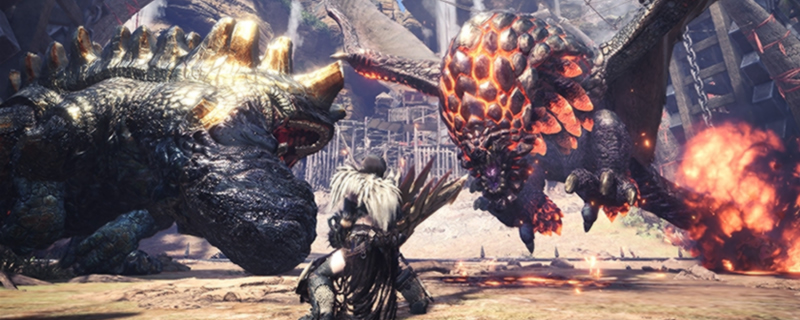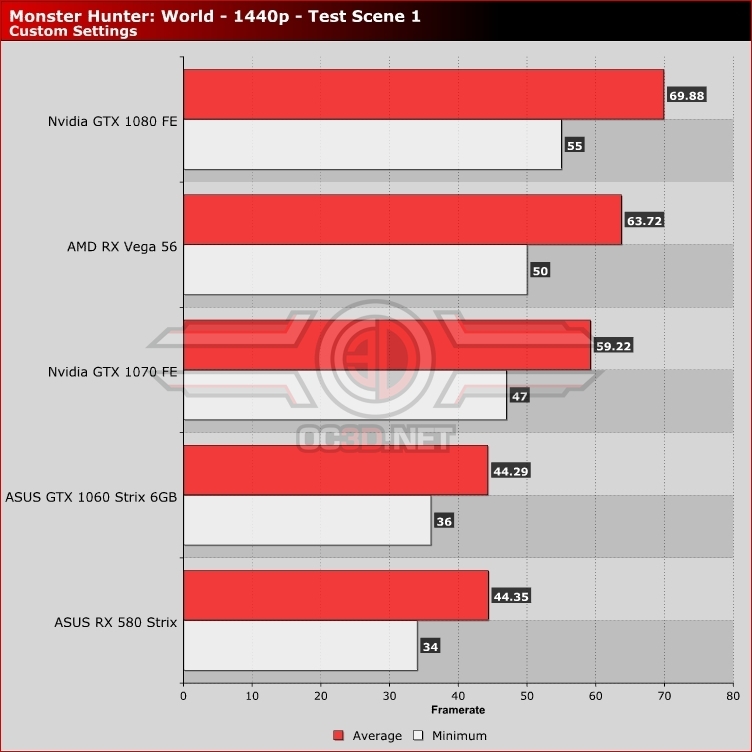Monster Hunter: World PC Performance Review
1440p Benchmarks – AMD VS Nvidia
At 1440p even Nvidia’s mighty GTX 1080 dips below 60FPS, creating the need for further settings reductions for a constant 60 FPS gaming experience. With our custom settings, we have taken the easy performance gains, turning off Volumetric Rendering while also reducing SH Diffuse to Low. Nvidia’s GTX 1080 Ti would likely be able to maintain constant 60+ framerates at these settings, though sadly AMD has nothing in that performance category right now. Â
In the case of Nvidia’s GTX 1080, using Monster Hunter World’s Variable Resolution Scaling (Optimise Framerate) may be a good option, as this will cause a short-term resolution decrease to deal with sub-60FPS dips. This change should be enough to make performance stable on Nvidia’s GTX 1080, though these dips could also be solved with GPU overclocking or other game settings adjustments. These methods could also be used to bring Nvidia’s GTX 1070, and AMD RX Vega 56 over the 60FPS minimum mark, though more drastic resolution scaling and other graphical changes will be needed, especially when we see minimum framerates like our second test scene.Â
Moving down to our RX 580 and GTX 1060 Strix graphics cards, we can see that both GPUs sit close to the 30+ FPS performance bracket, with both GPUs requiring huge visual downgrades to achieve 60FPS framerates at this resolution. The best option at 1440p for these graphics cards is to aim for a steady 30 FPS lock or to reduce the game’s resolution scale and other graphical settings to achieve higher framerates. Â
Â
 Â





